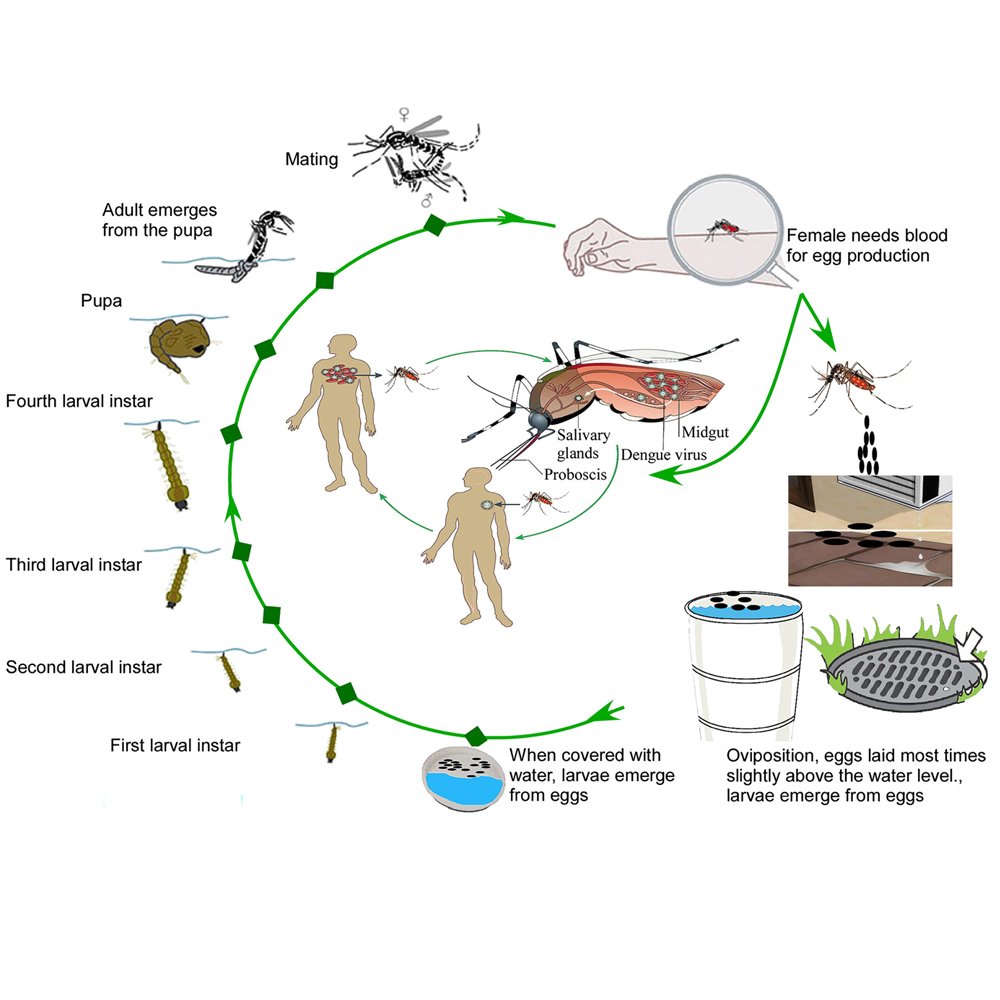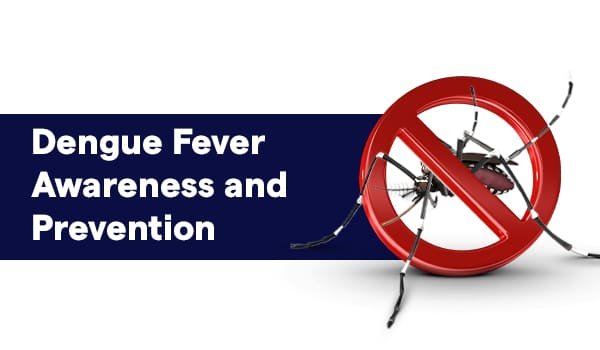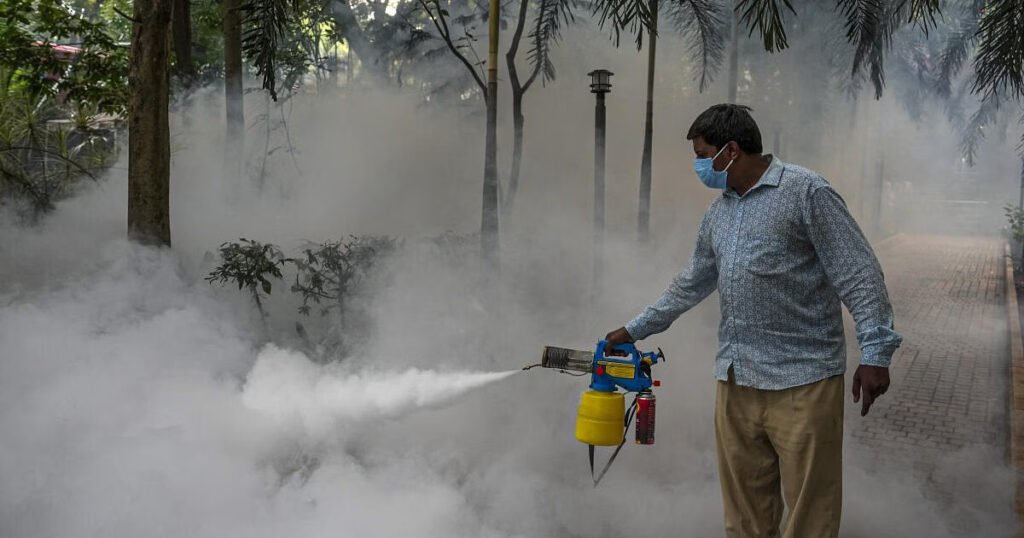The Impact of Dengue
Raising Awareness for Better Community Health Outcomes
Dengue is a national threat not to a single community but to the entire world. It is alternatively known as bone-break fever. Why bone-break fever? People/patients suffering from dengue have documented the pain they experienced, quite similar to the breaking of bones, resulting in severe joint pain. However, in reality, no bones are broken. It is caused by a dangerous virus transmitted through the bite of an infected mosquito. The initial symptoms are asymptomatic, or may include mild fever, fatigue that gets easily ignored, but can be deadly when left unexamined, unaddressed, and untreated.
While most mosquito bites are commonly mistaken to be normal and are easily ignored, the particular infected female mosquito, called Aedes, also known as Aedes albopictus or Aedes aegypti, can be very deadly. Though dengue virus (DENV) is a non-contagious disease, a single infected Aedes mosquito is potentially enough to infect/attack/bite multiple people throughout the week. Additionally, it can cause Zika and Chikungunya, which are equally deadly when left untreated at the right time. However, the infected mosquito has four types of dengue virus serotypes, meaning you are at risk of getting infected more than once.
Its Origin
The origins or the early presence of dengue-like symptoms in human beings are known to be found in the Chinese encyclopaedia, dated from 265 to 420 AD. Leaving a strong yet deadly mark on the pages of history in the 17th century, there were emerging reports from Panama and the French West Indies. Due to the excess muscle and joint pain felt by patients in the eighteenth century, it was then called the bone break disease.
<br><br>
Dengue was also monikered as Dandy fever by the West Indies and Dingee or Dunga by Cubans in Cuba after spreading widely. But, in the 19th century, it finally got its recognition as dengue, affecting the southern United States, the Caribbean, Brazil, and Peru. However, it has kept affecting the human race over the period to date.




Camp Photo Gallery






Present Circumstances
Before 1970, nine countries were affected by the viral infection caused by a single infected mosquito. In a short time, it swept across nearly 100 additional countries. The World Health Organization (WHO) reported an alarming 5.2 million cases of infection in 2019." However, its official website states the current number of viral/infected cases ranges between 100 to 400 million yearly.
The deadly virus has impacted approximately half of the world’s population, and the remaining are at higher risk of getting affected by the virus. Today, it is majorly impacting the tropical and sub-tropical weather conditions, targeting the urban and semi-urban regions.


India
India wasn’t very far away from getting affected by the deadly virus. The impact of the virus has caused several yearly epidemics, and the mortality rate has become staggeringly high as this country experiences both subtropical and tropical climatic conditions. However, the 1st virologically confirmed dengue fever started in 1963 and lasted till 1964. A year when there was no specific treatment available, major cases were reported from the eastern coast of India and Calcutta (Kolkata). Today, after several awareness projects, multiple patients visit the hospitals and clinics and are documented. However, numerous cases remain undocumented, as individuals tend to regard it as a typical fever or joint pain, unless the condition worsens.
Can you be at risk?
Anyone can be at risk, as the most favorable times are the summer and rainy seasons, for which precautions must be taken. Here are some symptoms you must watch for.
Symptoms
- High Fever: An abrupt rise in body temperature, frequently peaking at 104°F (40°C).
- Pain Behind the Eyes: A deep, throbbing pain in and around the eyes.
- Severe Headache: Strong, persistent headaches, commonly located behind the eyes.
- Joint and Muscle Pain: Often referred to as "break-bone fever" due to severe discomfort in the joints and muscles.
- Rash: A rash may appear a few days after the fever sets in, typically red and blotchy, or it may spread more widely.
- Fatigue: Extreme exhaustion and weakness, which can persist for weeks.


Severe Symptoms
In certain cases, dengue may advance to a more severe form, necessitating immediate medical intervention.
Symptoms indicative of severe dengue include: Severe Abdominal Pain: Intense pain in the stomach region, causing loose motions.
- Persistent Vomiting: Repeated episodes of vomiting that may, in some cases, contain traces of blood
- Excessive Bleeding: Noticeable Bleeding, including nose, gums, and some bruising with minimum impact
- Shock: Blood pressure fluctuation, causing weak pulse rate and fainting
- Organ Damage: Can damage the liver, kidney, and heart
Prevention
Personal Protection: Start with your own safety. Infected mosquitoes that spread dengue/Zika/Chikungunya are aggressive early morning/daytime biters, so it’s important to: Symptoms indicative of severe dengue include: Severe Abdominal Pain: Intense pain in the stomach region, causing loose motions.
- As you step outside your house, never skip spraying or spreading mosquito repellent on your body. You must always use products suggested by physicians and pharmacists, mainly containing picaridin/ DEET.
- Cover up with light-colored, long-sleeved shirts and long pants, especially during peak mosquito activity hours—early morning and late afternoon.
- To create a safe sleeping space, use bed nets while sleeping or keep your windows and doors screened.


Environmental Measures
- Eliminate standing water, which serves as breeding sites for Aedes mosquitoes (e.g., in flowerpots, tires, buckets, coconut shells, clogged drains.
- Replace the water in vases, pet dishes, and birdbaths weekly to stop mosquitoes from laying eggs.
- Organizing mandatory clean-up drives in and around the neighborhood to eliminate and eradicate any hidden mosquito habitats.
Our Approach
At Grow Together, a non-profit organization, effective dengue prevention starts with early intervention, community awareness, and sustainable mosquito control. We combine grassroots engagement by offering technical and practical solutions. We plan to reduce the spread of dengue, Zika, and Chikungunya-like deadly viruses in vulnerable communities and society. We aim to reach every corner, taking appropriate measures to stop a single life from getting affected.
On 25th August 2024, the Grow Together team conducted a meeting at its Bhubaneswar Office proposing a Dengue Awareness Program. We decided to set up a camp by sending our dedicated team members, volunteers from the local area, who understood the seriousness of the previous outbreak in that remote area, like Ramathenga. It is a village where people are unaware of how the Dengue/Zika/Chikungunya virus has dangerous impacts and has previously affected their lives on multiple occasions. The place is located in the Danagadi block of our very own Jajpur district, Odisha, India.
Day of Action
One of the Primary Trustees, Doctor SubhasishJamuda, his team, and all other members of Grow Together, went to Ramathenga, setting up a camp on 1st September 2024 at 11:30 am. Not to forget, we are obliged to all the village volunteers, taking an active part with us. They helped us communicate with local people in their local language. The Grow Together team and volunteers started visiting door to door and convinced the villagers to visit the local school for further information.

Steps taken by us
The Grow Together Team set up its camp in one of the primary schools at Ramathenga, supported by Ramathenga School Trustees, followed by the steps
Grow Together conducted workshops, school sessions, and community campaigns for the villagers who came in three batches at Ramathenga School and nearby areas by raising awareness about dengue symptoms, transmission, and prevention. By providing accurate, accessible information, we empower every individual to protect themselves and their families. briefing the symptoms like high fever, joint pain, persistent headaches, red patches on the body, loose motion in certain cases, etc. We educated them by showing numerous diagrams, explaining in their local language for better understanding.
The Grow Together members visited with the villagers/residents, identifying and eliminating mosquito breeding sites from each corner. From clearing stagnant water, promoting weekly clean-up drives, the Grow Together team is helping remote areas create mosquito-resistant neighborhoods. We explained every breeding place of mosquitoes, such as unused pots, coconut shells, tires, stagnant drains, garbage areas, flower pots, and every possible place where water storage remains unattended or unused.
The Grow Together team communicated with more than 50 people, explaining the preliminary warning signs to seek timely medical attention. Generally, people consider it to be a normal fever due to its asymptomatic or mild feverish symptoms before it becomes aggressive, needing immediate medical attention. Though most remote villages don’t have medical facilities at their fingertips and are ignorant of the disease causes, they seem to stay home and rely on some herbal medicines or black magicians rather than seeking medical attention. We intend to give them the right information, advice, and help.
The Grow Together team trained volunteers and community health workers to become dengue prevention ambassadors, ensuring that knowledge and action continue long after our campaigns end. The members and volunteers are asked to visit each house and remind them to use mosquito nets, repellents, and mosquito coils at night. People are counselled to wear long sleeves, use mosquito repellents, use mosquito nets at night, and seek immediate medical attention when in need.
Moreover
Our Grow Together Team has distributed mosquito nets, repellents to everyone living in Ramathenga, Jajpur, which made the locals happy for our contribution and care. Grow Together is ready to offer immediate medical support and guidance to anyone in need. All volunteers are actively working in the place and will support anyone seeking help. However, Grow Together is trying its best to eradicate dengue/Zika/Chikungunya from one village after another, making the world a better and healthier place to live in.
